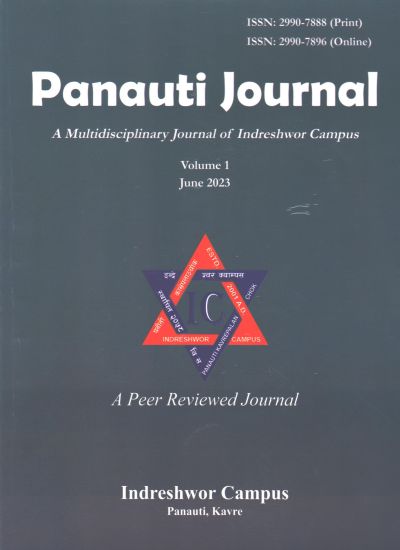Factors Associated with Absenteeism in Secondary School Students of Namobuddha Municipality
DOI:
https://doi.org/10.3126/panauti.v1i1.63547Keywords:
Absenteeism, secondary students, Nepal, personal factors, socio-cultural factorsAbstract
Absenteeism is a significant issue faced by educational institutions worldwide, including those in Nepal. High rates of absenteeism can negatively impact students' academic performance, potentially leading to poor grades and increased likelihood of dropping out. This study aims to investigate the frequency of absenteeism and its association with various factors in Namobuddha Municipality, Kavrepalanchok district among 288 secondary students. A cross-sectional survey was conducted for the study, and a self-administered questionnaire was used to collect the data. The collected data was analyzed using SPSS. The results showed that 56.3% of students reported being absent for one day, 15.6% for one week, and 2.1% for 15 days in current academic year they were studying. Personal factors were the most significant contributing factors to absenteeism, with bullying (36.5%), lack of interest in study (69.8%), and stress (39.6%) being the top reasons. The school environment was also a significant contributing factor, the relationship between students and teachers (50%), going to work with parents (41.7%), inability to buy essential stationeries (22.9%) also contributed for absenteeism among students. The chi-square test revealed a significant association between absenteeism and personal factors (p=0.002), school environment (p=0.001), and socio-cultural factors (p=0.001). Absenteeism is a significant problem faced by educational institutions in Nepal, with personal factors, school environment, and socio-cultural factors being significant contributing factors. Interventions aimed at addressing these factors can reduce absenteeism and improve the academic progress of students.
Downloads
Downloads
Published
How to Cite
Issue
Section
License
Copyright (c) 2023 Panauti Journal

This work is licensed under a Creative Commons Attribution-NonCommercial 4.0 International License.
This license enables reusers to distribute, remix, adapt, and build upon the material in any medium or format for noncommercial purposes only, and only so long as attribution is given to the creator.




